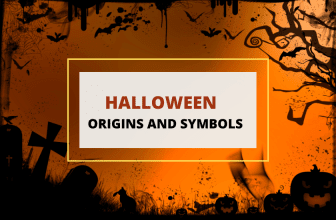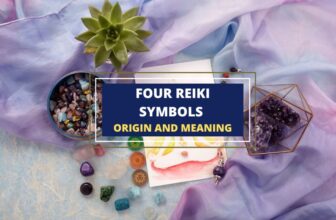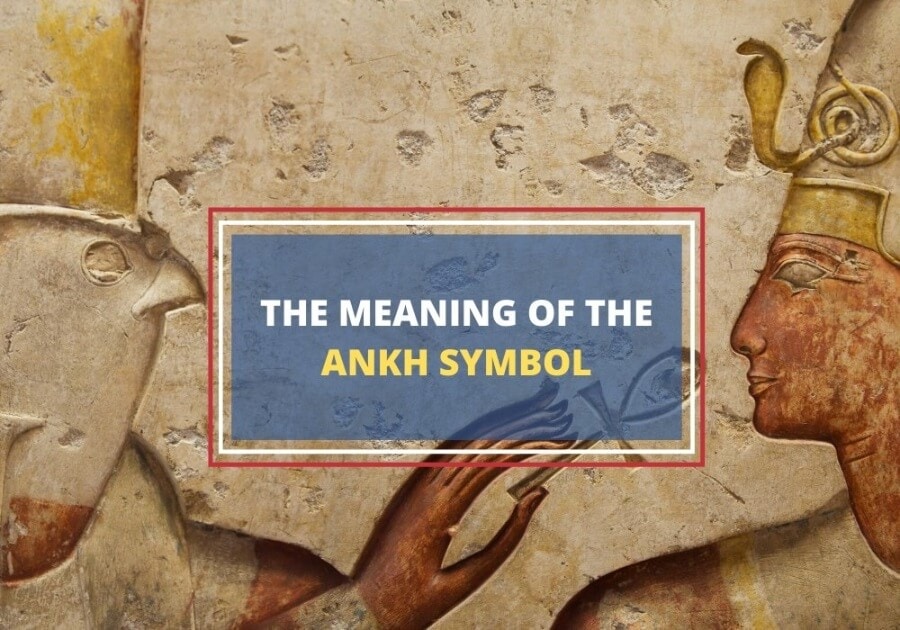
Table of Contents
The Ankh is one of the oldest and most common symbols in ancient Egypt. A symbol of life itself, the Ankh is shaped like a cross with an oval head, with the other three arms having a slightly widening design as they stray from the center of the cross. The symbol holds significance in many cultures and faiths. It remains popular in pop culture, fashion and jewelry.
There are many questions surrounding the Ankh, with some confusion regarding its origins and exact meanings. Here’s a look at this enduring symbol and what it means today.
Origins and History of the Ankh Symbol
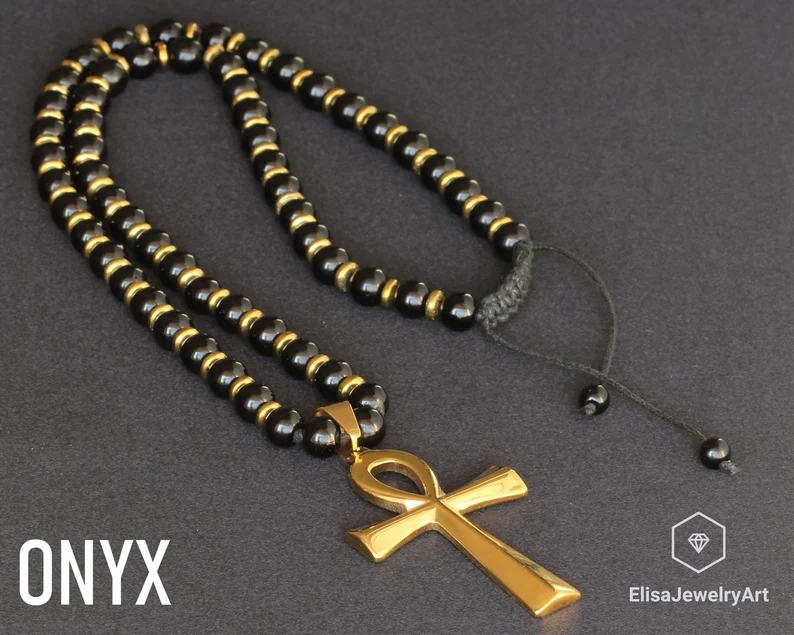
The earliest hieroglyphic representations of the Ankh symbol date back to 3,000 BCE (more than 5,000 years ago). However, scholars believe that the symbol is likely to be even older than that, with its origins in antiquity. The Ankh can be found everywhere in ancient Egyptian architecture and artwork, indicating that it was an extremely important symbol, heavy with meaning.
The symbol is often portrayed in Egyptian representations of deities and royalty. The most common depiction of the Ankh is as an offering by an Egyptian god to a king or queen, with the Ankh typically held to the ruler’s mouth. This probably represented the gods giving the Egyptian rulers eternal life, making them living embodiments of divinity. The Ankh symbol can be seen on the sarcophagi of many Egyptian rulers.
What Is the Meaning of the Ankh’s Shape?
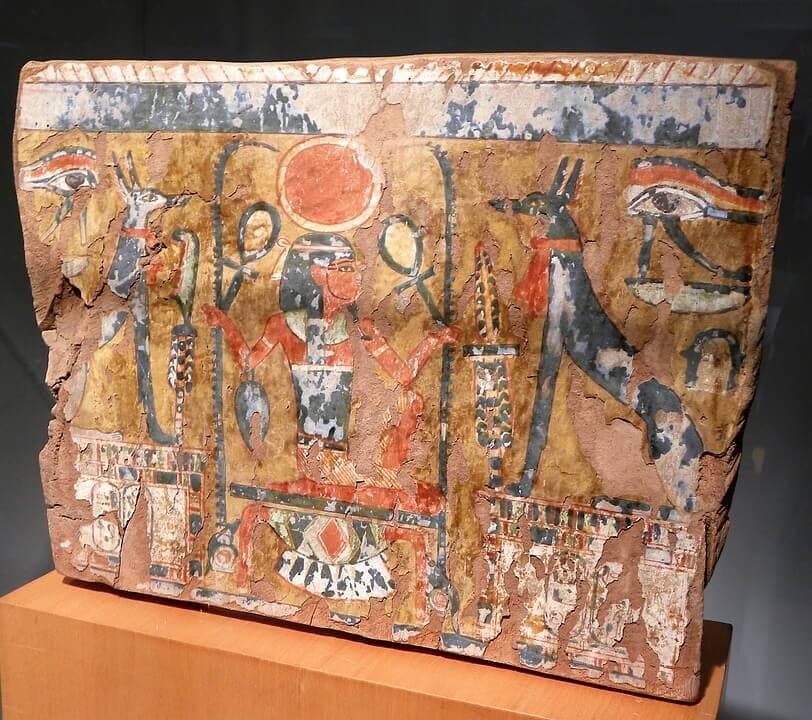
Egyptian art depicting the Ankh
Historians know that the Ankh represents “life” because of its later use but it’s still unclear why the symbol is shaped as it is. There are several different theories attempting to explain the symbol’s shape:
1- A Knot
Many scholars believe that the Ankh is not actually a cross but is a knot formed from reeds or cloth. This is widely accepted as a likely hypothesis as earlier representations of the Ankh show its lower arms as somewhat flexible materials, similar to the ends of a knot. This would explain both the widening arms of the Ankh, as well as the oval head of the symbol.
Other early representations of the Ankh also look very similar to the tyet symbol which is known as “The Knot of Isis”. This knot hypothesis can also be easily connected to the “life” meaning of the Ankh as knots often represent life and eternity in a lot of cultures (e.g. the wedding band).
2- Water and Air
Some believe that the Ankh is a representation of water and air – two elements necessary for the existence of life. This hypothesis is supported by the fact that many ancient Egyptian water vessels were designed in the shape of the Ankh.
3- The Sexual Hypothesis
There’s also the idea that the Ankh may be a visual representation of a sexual act. The loop at the top may represent the woman’s womb while the rest of the symbol could represent the man’s penis. The side arms of the cross could represent the children birthed from the union of male and female. This is an undeniably fitting hypothesis as it fits in with the Ankh’s meaning as the symbol of life, while also explaining its shape. However, this hypothesis isn’t supported by archeological evidence.
4- A Mirror
Another popular hypothesis is that the Ankh’s shape is based on that of a handheld mirror. The idea was suggested by 19th century Egyptologist Victor Loret. There is some archeological evidence to tie the Ankh to mirrors, namely that the symbol was often found in the ancient Egyptian words for mirror and flower bouquet. However, while the Ankh does look like a handheld mirror, there are several problems with this idea, some even acknowledged by Loret himself. For one thing, most ancient depictions of deities or pharaohs holding or passing the Ankh to other characters have them holding the Ankh by the hoop. Another problem is the fact that connecting handheld mirrors to the concept of life is a stretch.
What is the Symbolic Meaning of the Ankh?
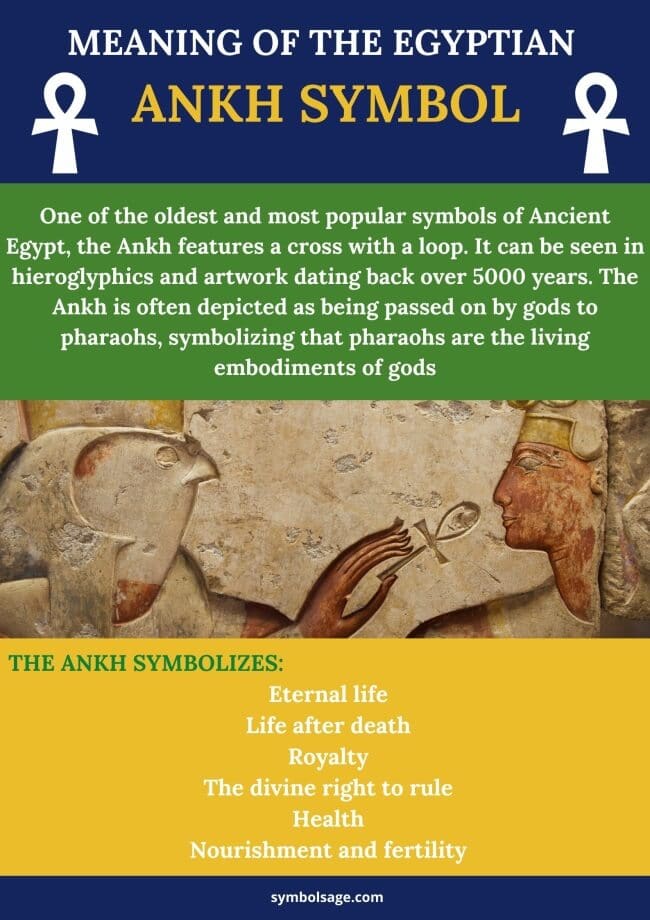
The Ankh has one clear and unquestionable meaning – it’s the symbol of life. In hieroglyphics, it’s been used in all possible derivatives of the word life:
- Live
- Health
- Fertility
- Nourish
- Alive
As we mentioned above, the Ankh is often depicted as being passed on by gods to pharaohs, symbolizing that pharaohs are the living embodiments of gods or that they’re at the very least blessed by them.
The Ankh was also used in various positive expressions and greetings such as:
- May you be healthy/alive
- I wish you long life/health
- Alive, sound and healthy
It was also one of the most common symbols in tombs and on sarcophagi, as the ancient Egyptians were strong believes in life after death.
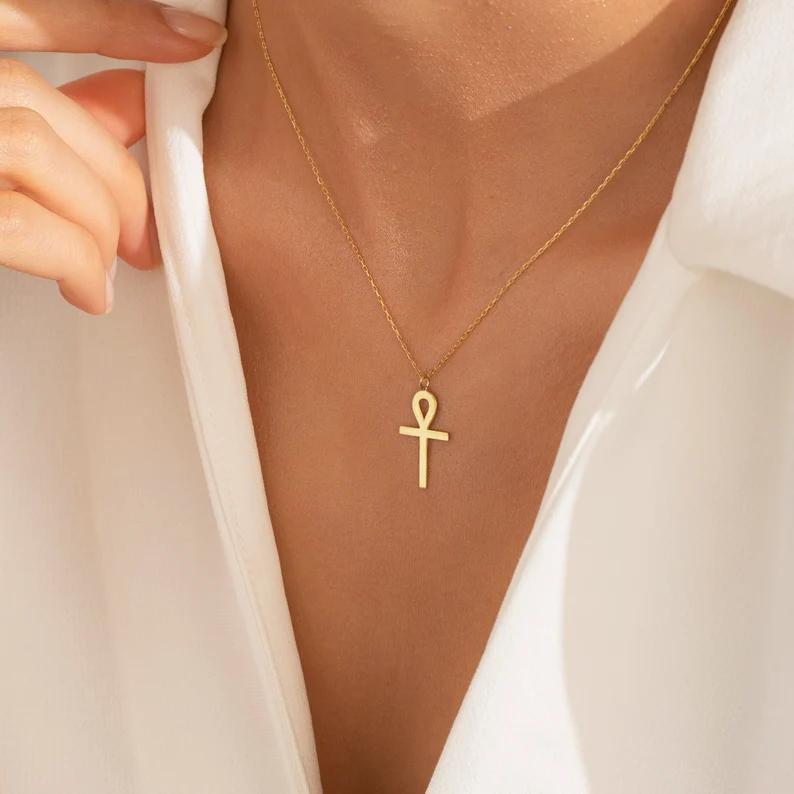
Because it was so often depicted with gods and pharaohs, the Ankh was also closely associated with royalty and divinity. As gods gifted the Ankh to pharaohs and queens, so these rulers were often worshiped as “givers of life” for the common people.
Ankh vs. the Christian Cross
Some have mistaken the Ankh for a Christian cross, as the shape of the two are somewhat similar. However, while the Christian cross is a horizontal crossbar placed upon a vertical beam, the Ankh is a vertical beam ending in a loop.
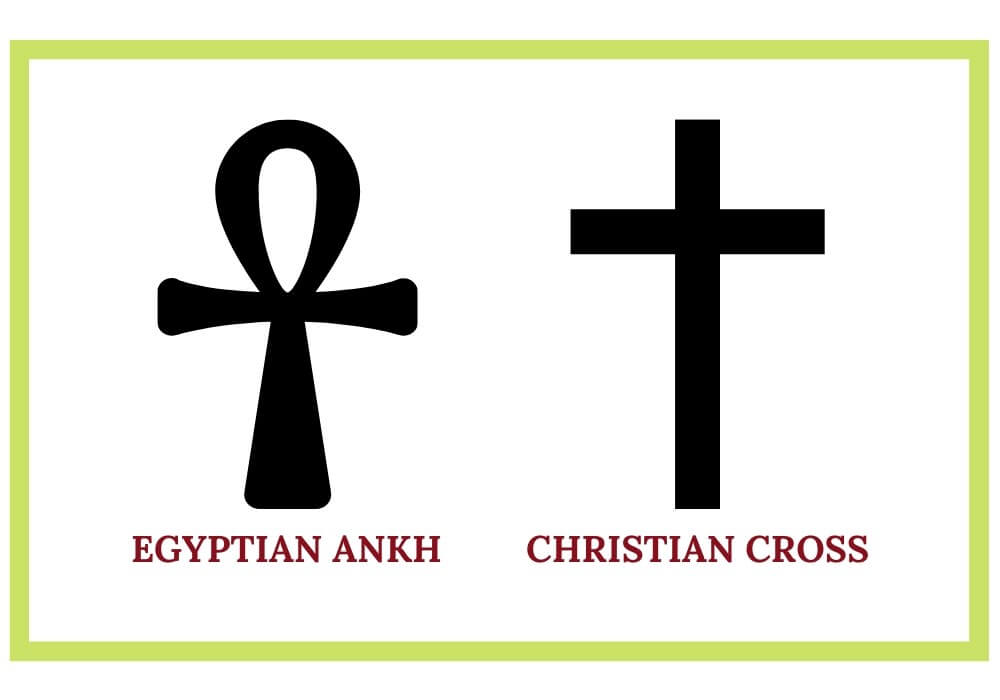
Although the Ankh started out as an Egyptian symbol, today it’s used more universally. During the period of Christianization in Egypt, in the early 4th to 5th centuries AD, a variation of the Ankh was appropriated to represent a Christian cross. As the meaning of the Ankh relates to life and the afterlife, its symbolism took the symbol to represent the birth, death and resurrection of Jesus.
Sometimes, the Ankh is used upside-down to represent its opposite meaning – anti-life or death. The Christian cross, also, when inverted is typically interpreted as representing negative aspects of the faith – such as the Anti-Christ.
So, the bottom line?
The Ankh and the Christian Cross have had some overlaps, thanks to early Christians adapting of the symbol. However, today, it’s viewed more as a secular symbol and one that represents Egyptian heritage.
The Ankh Symbol in Jewelry and Fashion
Because of how recognizable it is, the Ankh is one of the most popular ancient symbols in contemporary art and fashion. It’s typically used in jewelry, often carved into elaborate earrings, necklaces and other accessories. Many popular celebrities, such as Rihanna, Katy Perry and Beyonce, have been seen wearing the Ankh symbol, enhancing its popularity and relevance. Below is a list of the editor’s top picks featuring the ankh symbol jewelry.
The Ankh’s positive meaning makes it a welcoming symbol in virtually any form of fashion and art. Because it’s a unisex symbol, it suits men and women. It’s a popular symbol for tattoos, and can be found in many variations.
Some believe that the Ankh is a Christian cross, with Christians sometimes wearing the Ankh as a representation of their faith. However, the Ankh’s original significance has little to do with the Christian faith.
Wrapping Up
The Ankh’s symmetrical and beautiful design continues to be popular in modern society. While it contains an aura of mystery and enigma, the Ankh has many positive connotations and can be seen as a positive symbol to wear.









